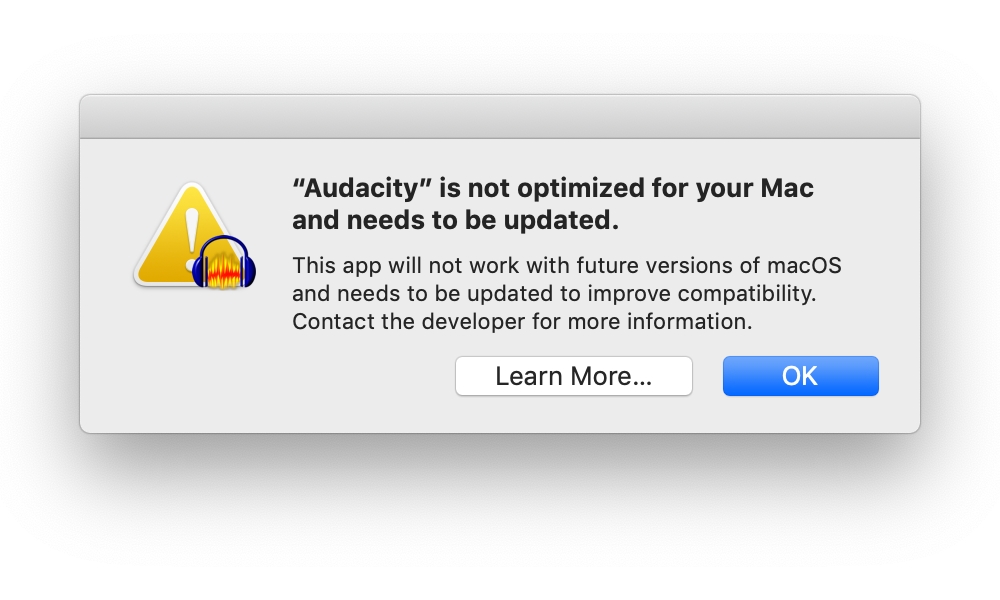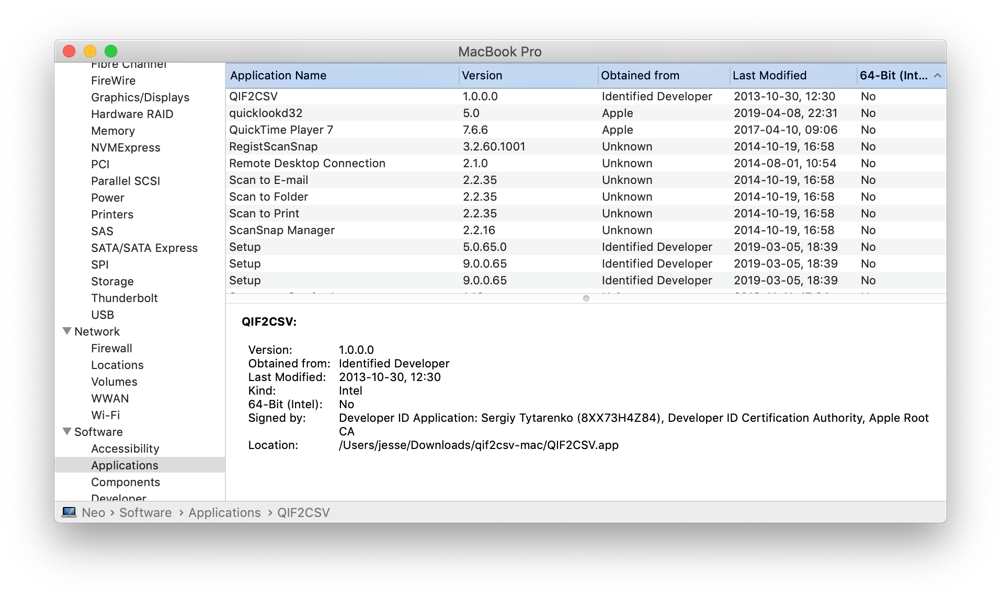Will Your Apps Work in macOS Catalina? Here’s How to Find Out
 Credit: Neo Life
Credit: Neo Life
Toggle Dark Mode
When Apple announced macOS 10.15 Catalina last month, it touted several new features, including the end of iTunes as we know it, better second screen support and window management, along with several other features, but there’s a dark side to Catalina that Apple’s not talking about nearly as much (and no, we’re not talking about Catalina’s new automatic dark mode).
Catalina is going to spell the end of the road for 32-bit Mac apps, meaning that many of your old apps could stop working completely when Apple’s next major operating system arrives this fall. Of course, you don’t have to upgrade, but if you want to enjoy all of Catalina’s yummy goodness when it arrives, you’ll want to be prepared so that you at least know what you might be sacrificing to move to this new island paradise.
The Death of 32-bit Apps
To be fair, this has been a long time coming, so it really shouldn’t be a surprise to anybody. As Apple notes, it began the transition to 64-bit apps over a decade ago, and when it announced macOS Mojave last year at WWDC 2018, it clearly told developers that it would be the last version of macOS that would be capable of running 32-bit apps.

In addition, Mojave hasn’t been shy about warning you if you attempt to open a 32-bit app, letting you know that it’s going to stop working soon, and recommending that you contact the developer to request a 64-bit version. Unfortunately, however, Apple decided not to be a nag about this, so the warning is only shown the first time you open a new 32-bit app.
This also isn’t the first time we’ve been down this road. Apple made the same move of killing off 32-bit apps on iOS, first warning users in iOS 10.3 in early 2017 before shutting them out when iOS 11 arrived later that year.
Ferreting Out Incompatible Apps
Since Apple only warns you about 32-bit apps once, you could probably be forgiven if you’ve forgotten that you still have some of these kicking around on your system, especially if you’ve been using a Mac for over a decade like we have. When you’re in the middle of a project, there’s definitely an understandable tendency to just click “OK” and figure you’ll deal with it later.
Unfortunately, “later” often never gets here, and many of us could be sitting on 32-bit apps that are vital to our workflow and waiting to self-destruct on us once we arrive on the shores of Catalina.
The good news is that there’s a fairly easy ways to identify if your apps are 32-bit or 64-bit, and you can do it using the tools that are already built into macOS — not only Mojave, but even in prior versions where the incompatibility warning doesn’t even appear.
Follow these steps to get a list of all of the apps installed on macOS and see if they’re 64-bit:
- Click the Apple logo (?) in the very top-left corner of your screen.
- Click About this Mac at the top of the drop-down menu that appears.
- From the About Window that appears, click the System Report… button. This will open a new app called “System Information.”
- Scroll down in the panel on the left under you see Applications, located under the Software heading.
- Wait for the list to populate. Depending on how many apps are on your Mac, this may take a few minutes.
- Once the list of apps has appeared in the main window, look for a column titled “64-Bit (Intel)”; note that you may have to scroll to the right or increase your window size in order to see it.
- Click on the “64-Bit (Intel)” column heading to sort by that column. All of your 64-bit apps (labelled “Yes”) and 32-bit apps (labelled “No”) will be grouped together.

You’ll notice that there are a lot of system apps in this list as well, including some by Apple itself. Most of these, however, ship with the operating system, and will therefore naturally be updated as part of macOS Catalina.
So What Can I Do About This?
If the only apps that have “No” beside them don’t really matter to you, there’s really nothing you need to worry about. You can delete those apps now or later, but they won’t prevent you from updating to Catalina, they’ll just stop working once you do.
If there are one or more important apps on the list, however, you’ll want to check with the app developer — either on their website or reaching out to them directly — to see if there’s either an update already, or if they’re at least working on one.
If the app in question came from the Mac App Store, it should be updated automatically, so if there’s an update available you should already have it. For apps installed from other sources, though, it’s a good idea to open them up and do a “Check for Updates” within those apps, assuming they have that capability (most apps put the option for this either on the app’s main menu or in their Help menu). If you don’t know how to get in touch with the developer, you can also often find contact information inside the app, either from the About option found on the app’s main menu, or within the app’s help screens.
Lastly, if there’s an app that you rely on that’s 32-bit and no longer in development, this is probably as good a time as any to start searching out 64-bit alternatives that are still being actively maintained by their developers.






